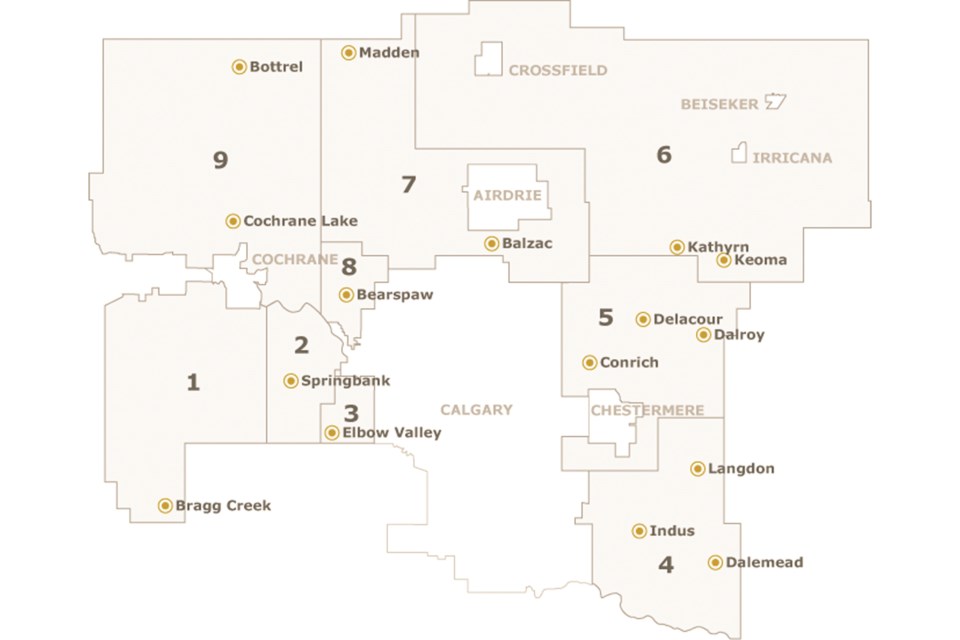A review of Rocky View County’s (RVC) electoral boundaries and governance is ramping up with council’s approval of a Terms of Reference (TOR) to guide the project.
The consultant team tasked with carrying out the review was introduced to council at a regular meeting Jan. 28.
“The purpose of the review is to review the County’s governance structure and consider a mayor-at-large model, the number of elected officials and the County’s divisional boundaries,” said municipal clerk Charlotte Satink.
Council approved funding for the review in November 2019, and Satink said administration had since retained ISL Engineering and Land Services Ltd. and Transitional Solutions Inc., who have partnered to deliver options for council’s consideration by July 31.
Project manager Brian Conger, with ISL, laid out the plan for the review. He said the purpose of redistribution, according to the Supreme Court of Canada, is to ensure citizens’ constitutional right of effective representation.
The project will include a population analysis, Conger said, looking at the municipality’s current demographic make-up, along with a population projection “to determine the anticipated demographic change in the County.”
Darren Young, technical analysis lead for the project, said the team will use municipal census data within a geographic information system to compare and analyze current population distributions against current and past electoral boundaries, as well as planned future growth areas. This will include projections for eight years – equivalent to two electoral terms – allowing the team to “future-proof” the boundaries by anticipating where RVC’s growth is likely to happen.
Council amended the TOR to reflect the “future-proofing,” requiring all boundary options meet a 25 per cent deviation for two electoral terms.
“Ultimately, we’ll use this data to help determine boundary options in accordance with the best practices that are utilized for these types of reviews, looking at [equal distribution] – or within a 25 per cent plus or minus of the population per division factoring in identifiable boundaries, historical boundaries and so forth,” Young said.
A key component of the review is public engagement. At a meeting Sept. 10, 2019, council voted for a limited scope of engagement that includes informing the public and “listening and learning” only. Conger said feedback from residents will be collected in one round of engagement and presented to council at a workshop in May, along with best practices and the results of the population and spatial analyses.
“It’s at this workshop where we intend to discuss preferences as to the number of councillors in the County – the importance here is that we have an odd number – as well as to determine a preferred governance model,” he said.
The team will then use that background and direction to prepare three division scenarios, which will be presented at a public meeting in June.
Satink noted any bylaws changing the number of councillors, amending the electoral boundaries or the election or appointment of a chief elected official must be passed by Dec. 31 of this year to be valid in time for the next municipal election. Delivering a bylaw to council by July 31, as administration intends, falls well within that deadline.
According to administration, a public hearing on the bylaw is not required, although CAO Al Hoggan advised council it had discretion to schedule a public hearing on the matter.
Ultimately, council adopted the TOR it with a unanimous vote.



